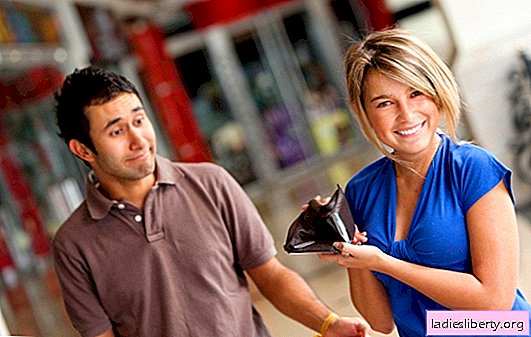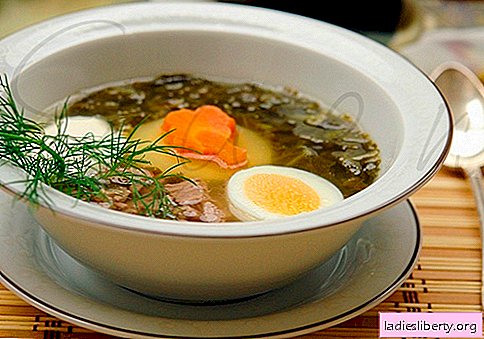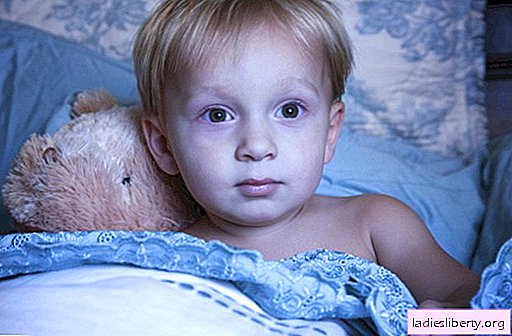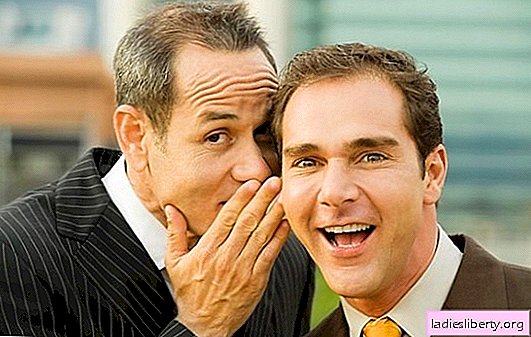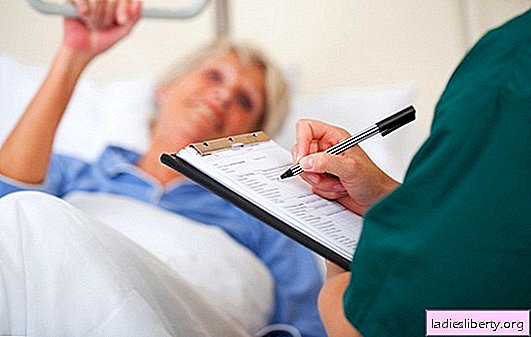
After birth, after two to three days, sometimes - after a week, crusts appear on the head of newborns. In appearance, they resemble seborrheic dermatitis, so inexperienced parents cause concern. There are crusts in almost every baby. Some are more prone to this problem, others less. Therefore, the question - the crusts on the head of newborns - what is it - worries many.
What do the crusts on the head of newborns look like?
The crusts that appear on the scalp of the baby’s head look like patches of dense drain scales of yellow - brown, milky or gray color, dense to the touch, sometimes merge into a continuous "shell" where the hair is drawn. They can be located on the temples and eyebrows. Most often they affect the parietal part of the head, therefore they are called parietal scales. Gneiss, milk crusts, a lullaby cap - all these are synonyms applied to crusts in newborns on their heads.
The mechanism of crusts
The main reason for the appearance of scales on the head is the unformed protective properties of the skin, high sensitivity and instability of the skin to various influences.
If the crusts appeared in the first days of life, the cause of their occurrence is physiological: sharply increased productivity of the sebaceous glands. The newborn has not yet developed sweat glands. Under the influence of androgens - sex hormones that enter the baby’s body through the mother’s blood during fetal delivery, and after birth with breast milk, the sebaceous glands intensively secrete sebum. After a while, the so-called hormonal crisis sets in, when release from androgens occurs. The duration of the crisis is a few weeks. In addition to the formation of crusts on the head, there are other manifestations: a rash on the face, swelling of the mammary glands, in girls - vaginal discharge, etc.
Before the onset of the year, the crusts disappear if you properly care for the scalp. But they can be disturbed for another two to three years.
Causes of the appearance of crusts on the head in newborns
When crusts appear on the head of a newborn not in the first days of life, but after 4 - 5 months after birth, the main factor in their occurrence is considered allergic. In such cases, this phenomenon is called seborrheic dermatitis, although in fact it is not. There is only an external resemblance.
In addition to the allergic factor, there are several other causes of crusts:
- overheating, when the newborn is constantly inadequately wrapped in heat;
- Wearing synthetic caps that do not allow air to pass through;
- Frequent bathing with the use of "adult" shampoos and gels.
In all these cases, the sebaceous glands secrete a secret with greater intensity, which leads to the formation of crusts. They appear regardless of the presence or absence of hair. These formations do not cause any discomfort or harm. It is believed that they slow hair growth. In addition, their unaesthetic appearance makes parents actively interested in how to remove the crusts on the head of newborns.
Crusts on the head of newborns - how to remove
Usually by the year the accumulation of scales on the child’s head disappears on their own. But the process of their spontaneous disappearance is long, takes a lot of time. Sometimes this happens within a few months, sometimes more than a year. Therefore, parents try to remove the flakes in order to minimize their lifespan.
To do this, you need to know how to remove the crusts on the head of newborns in the most gentle ways, without injuring the skin and not causing discomfort to the child.
The mechanical way to remove crusts
The easiest way is mechanical.
1. The scales are removed most easily during the bathing of the child, when the skin is steamed, and the crusts themselves "roll" under the fingers. The procedure is carried out with clean, washed hands, with care so as not to damage the skin, pressing lightly on the head. After the hair is dry, the remnants of the crusts are removed with a special soft brush.
2. Another mechanical safe peel control method:
- it is necessary to soften the crusts, spreading them with baby oil, petroleum jelly or any vegetable oil;
- a cap is immediately put on the head so as not to stain the laundry with oil and to accelerate the softening of the crusts;
- after 20 minutes, the oil is washed off with a special shampoo using a soft brush;
- after drying - combing with a children's comb with blunt teeth.
Peels themselves fall off after such a procedure, without leaving scratches or other damage to the skin. It is advisable to carry out such a massage no more than twice a week. On other days, you can wash your hair with running water.
Do not tear off unpaired scales: an infection easily penetrates through damaged skin, which leads to an inflammatory process and prolonged treatment.
Special shampoos
To understand how to remove the crusts on the head of newborns in a safe way, you need to know that not all detergents and shampoos can be used. There are special gels and shampoos for children up to a year. They have softening and exfoliating effects. Ease of use is that there is no need for pre-treatment and steaming. But at the same time it is necessary to pay attention to the negative points:
- long-term effect - the shampoo acts gradually, improvement does not occur after the first washing of the head;
- for some babies, the result may not come - apparently, it depends on the characteristics of the skin of the child
- Frequent use of shampoo sometimes causes even more skin irritation and increased formation of crusts on the head in newborns.
Method of using exfoliating shampoo: a small amount is applied to the scalp, foams, rinses after 3 to 4 minutes. Then it is combed out with a special soft brush.
Medicines in the fight against crusts on the head
It will not be possible to get rid of all the crusts on the head in a few procedures at once. But the cosmetic defect will decrease, and over time, the number of flakes will decrease significantly.
If there is a large area of damage, special means are used, which are prescribed by a dermatologist:
- dermatological cleansing gel;
- special dermatological creams and lotions on a non-greasy basis;
- special night creams that are washed off in the morning with medical shampoo.
In cases where, in addition to the accumulation of scales, there is a pronounced inflammatory process, weak glucocorticoids are used topically, with infection - antibacterial creams. It is categorically not recommended to use all these funds on your own: they are prescribed by a doctor in order to avoid possible side effects and taking into account contraindications.
Preventive measures
But for the final disposal of the crusts on the head, one treatment is not enough. It is necessary to use all methods of prevention, which include:
- Do not put on a cap without unnecessary need, especially in an apartment with a normal air temperature, so as not to overheat the scalp;
- regularly ventilate and moisturize the nursery to avoid dry skin;
- When bathing and shampooing, use only special children's products for washing;
- wash your hair with shampoo 2 times a week, not more often;
- be sure to apply a moisturizer to the scalp after washing with shampoo - this will relieve dry skin and peeling;
- carefully monitor food and diet: a child on artificial feeding often has an allergy to milk formulas;
- observe the diet and adhere to the diet of a nursing mother: the health and immunity of the newborn depends on what she eats;
- carefully and carefully select powders for washing baby clothes to avoid allergies;
- do not use synthetic baby clothes and hats;
- do not use a hair dryer for drying hair;
- do not bother with softening and removing peels - carry out procedures with an interval of several weeks if necessary in them;
- never scrape off the crust in order to avoid infection of emerging scratches and wounds.
If even after observing all these rules you cannot get rid of the scales, you must consult a doctor who will establish the cause and prescribe adequate treatment using safe means. But in most cases, this problem does not require medical intervention and the appointment of special treatment.

